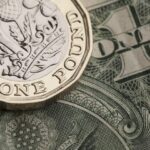Gold futures touched the strongest level in more than six months on Friday and capped a sixth weekly advance, the longest winning run since August 2011, as escalating tension in Ukraine, ahead of a referendum in Crimea on splitting to join Russia, and concern China’s growth is slowing momentum, boosted demand for bullion as a store of value. Meanwhile, assets in the SPDR Gold Trust, the biggest bullion-backed ETF, rose on Friday to the highest level since December 20th.
On the Comex division of the New York Mercantile Exchange, gold futures for settlement in April rose 0.8% on Friday to settle the week at $1 383.20 per troy ounce. Prices touched a session high at $1 388.40 per troy ounce, the strongest since September 9, while day’s low was touched at $1 368.30 an ounce.
Bullion settled the 5-day period 3.2% higher, capping a sixth weekly gain, as tension between Russia and Ukraine escalated, spurring demand for haven assets, including gold.
Gold futures are up 14% this year amid concern the economic growth of the largest bullion consumer, China, may slow, while unrest in Ukraine hurt emerging market assets already weakened by reductions in Fed stimulus, boosting demand for the precious metal as a store of value.
However, gold plunged 28% last year, the steepest annual decline since 1981 as some investors lost faith in the metal as a store of value and amid speculation Fed will continue scaling back its monetary stimulus throughout 2014.
Chinese retail sales and industrial production data missed estimates last week, while the parliament of Crimea voted that the Black Sea peninsula will declare itself an independent state if its residents approve a March 16 referendum on splitting from Ukraine and joining the Russian Federation. US President Barack Obama and German Chancellor Angela Merkel have stated the vote has no international legitimacy and warned Russia to retreat from plans to annex Crimea, with Merkel even threatening “massive” political and economic sanctions.
“Gold is buoyed by what’s happening in Ukraine and increasing worries about a slowdown in China’s economy,” said Ethan Wai, a research analyst at Wing Fung Financial Group, a Hong Kong-based gold trader and refiner, cited by Bloomberg. “The pullback in equities and a weaker dollar are supportive.”
The MSCI All-Country World Index of stocks has tumbled 1.6% so far this year amid concern the growth in the world’s second-largest economy is faltering, with at least four investment banks cutting their forecasts for China.
Fed stimulus outlook
Gold prices drew support after weaker-than expected US data spurred demand for gold as a safe-haven.
Preliminary data showed on Friday that US consumer confidence unexpectedly declined in March, with the corresponding Thomson Reuters/University of Michigan index of sentiment probably coming in at 79.9, down from a final reading of 81.6 in February and confounding analysts’ expectations of an increase to 82.0.
Also fanning negative sentiment, the US Bureau of Labor Statistics reported today that the producer price index of the country declined 0.1% in February, trailing analysts’ estimates of a 0.2% increase and after it rose 0.2% in the previous month. Year-over-year, wholesale prices advanced 0.9%, short of analysts’ projections of a 1.2% increase and down from a 1.2% gain in the 12 months through January.
The decline in US wholesale prices was broad-based, with clothing retailers, airlines and real-estate brokers all experiencing lower price pressure last month. The weak inflation data will probably give Fed officials more room to put low borrowing costs on hold, when they next meet on March 18-19th.
Fridays PPI report was the second using a refined index that encompasses 75% of the US economy, up from just one third of all output for the old index, which took into account only goods. The new gauge, which hasn’t been overhauled significantly since 1978, PPI now also reflects prices of services, government purchase, exports and construction.
Wholesale prices, excluding the volatile food and energy, declined 0.2% in February, confounding analysts’ expectations of a 0.1% increase and after they advanced 0.2% in the previous month. Yer-over-year, the index rose 1.1% in February from a year ago, down from a 1.3% increase in the previous month and trailing analysts’ estimates of a 1.4% gain.
However, downbeat data did little to alter the view that the Fed will continue tapering stimulus throughout the year, before exiting the program at the end of 2014.
Data on Thursday showed that the US economy is gaining traction, after the recent harsh weather, backing the case for the Federal Reserve to continue reducing stimulus, before exiting the program at the end of the year.
The US Census Bureau reported on Thursday that retail sales in the US increased 0.3% in February, exceeding analysts’ expectations of a 0.2% gain and after a 0.6% drop in January that was larger than the 0.4% decline reported earlier. Core retail sales, which exclude the volatile automobile sales, rose 0.3% in February, above analysts’ projections for a 0.1% gain and after a 0.3% drop in the previous month, that was larger than initially reported. Retail spending is regarded as a key economic indicator as it accounts for almost 70% of the US economy.
A separate report showed the number of people filing for unemployment benefits unexpectedly declined last week, reaching the weakest level since late November. Initial jobless claims dropped to 315 000 from 324 000 a week ago, compared to analysts’ projections of an increase to 330 000.
Federal Reserve Chair Janet Yellen said last month that central bank’s officials were “open to reconsidering” the pace of reductions in monthly bond purchase, should the economy falter, in contrast with her comments made earlier in February, that US economy has gained enough strength in order to withstand reduction of monetary stimulus.
At the same time, Fed officials will try to determine whether the weakness economy has recently demonstrated is due to temporary factors, before their next policy meeting scheduled for March 18-19th.
The central bank announced in December that it will pare monthly bond-buying purchases by $10 billion, after which it decided on another reduction of the same size at the meeting on policy in January, underscoring that labor market indicators, which “were mixed but on balance showed further improvement”, while nation’s economic growth has “picked up in recent quarters.”
Federal Reserve will probably continue to pare stimulus by $10 billion at each policy meeting before exiting the program in December, according to a Bloomberg News survey of 41 economists, conducted on January 10th.
Assets in the SPDR Gold Trust, the biggest bullion-backed ETP, expanded to 816.59 tons on Friday, the strongest level since December 20th. Holdings in the fund are 0.9% up this year after it has lost 41% of its assets in 2013, that wiped almost $42 billion in value. A total of 553 tons has been withdrawn last year. Billionaire hedge-fund manager John Paulson who holds the biggest stake in the SPDR Gold Trust told clients at the end of last year that he wouldn’t invest more money in his gold fund because it isn’t clear when inflation will accelerate. However, a government report revealed that the owner of the largest stake in the SPDR Gold Trust, kept his holdings unchanged in the fourth quarter of 2013.





